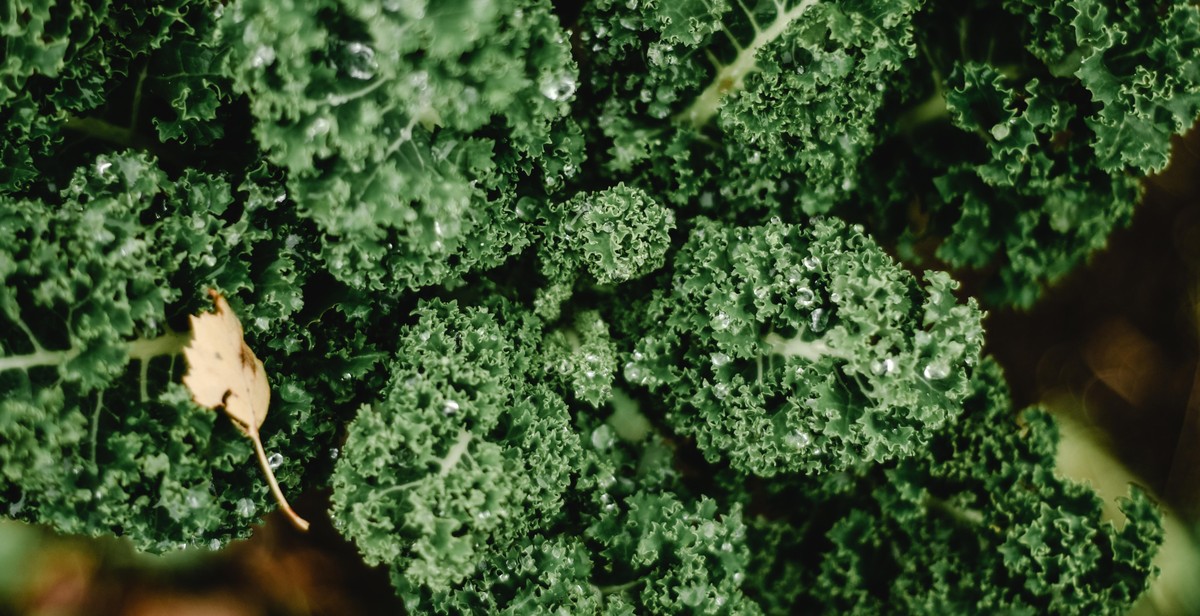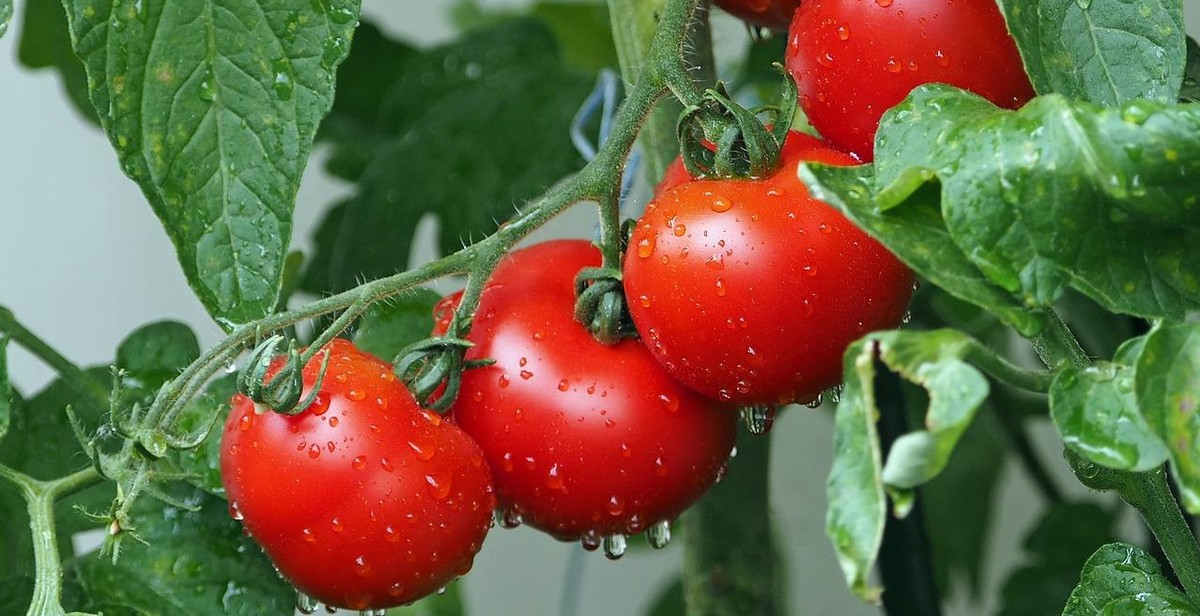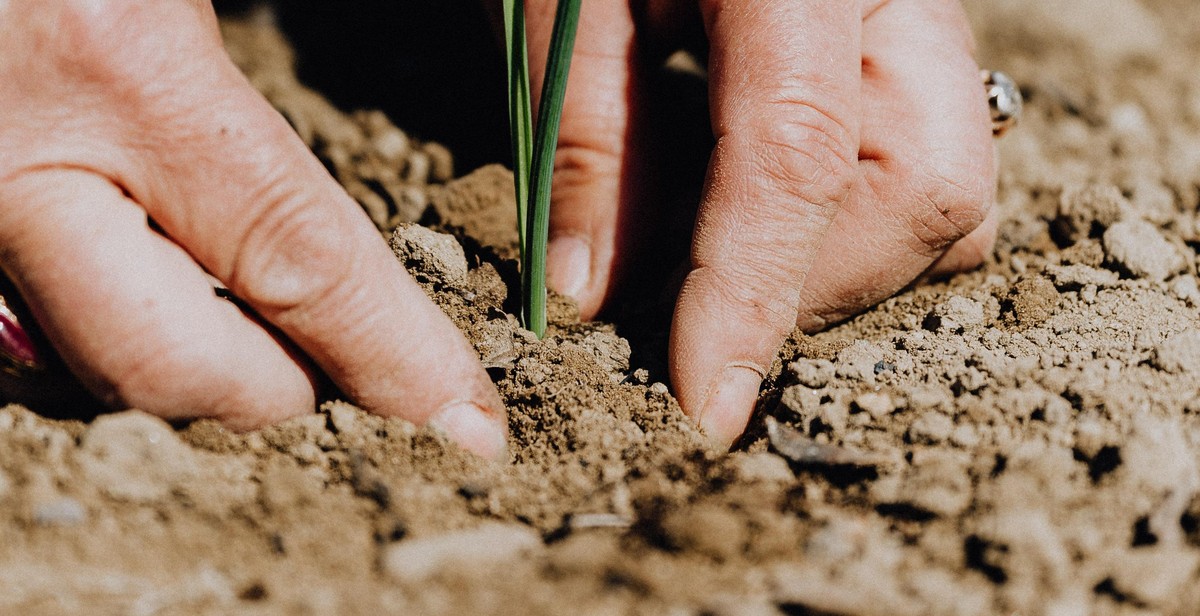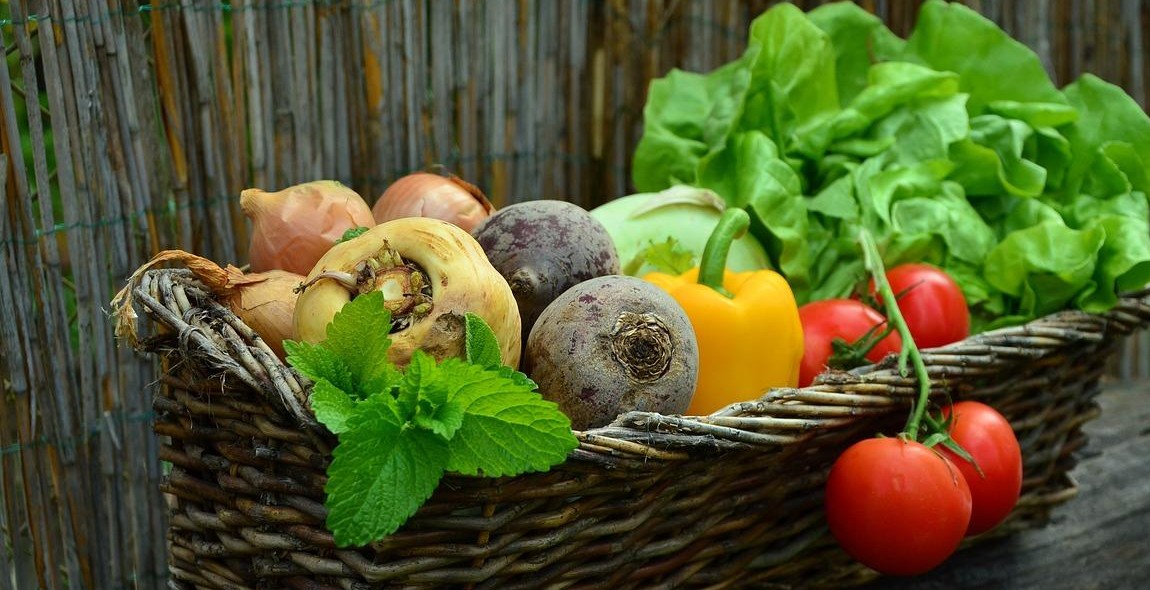How to Grow Your Own Organic Vegetables: Tips for Successful Home Gardening
Are you looking to start your own vegetable garden but don’t know where to begin? Growing your own organic vegetables at home can be a rewarding and fulfilling experience. Not only does it provide a sense of accomplishment and satisfaction, but it also allows you to have access to fresh, healthy produce right in your own backyard.
The Benefits of Organic Gardening
Organic gardening involves growing fruits and vegetables without the use of synthetic fertilizers, pesticides, or genetically modified organisms (GMOs). This type of gardening has numerous benefits, including:
- Reduced exposure to harmful chemicals
- Better-tasting and more nutritious produce
- Improved soil health and fertility
- Lowered carbon footprint
- Support for local ecosystems and biodiversity
Getting Started with Home Gardening
Starting a home garden can seem overwhelming at first, but it’s easier than you think. Here are some tips to get you started:
- Choose a location with plenty of sunlight
- Prepare the soil by adding compost or other organic matter
- Select plants that are well-suited for your region and climate
- Water regularly and mulch to retain moisture
- Keep pests and diseases under control using natural methods
By following these tips and practicing patience and persistence, you can successfully grow your own organic vegetables at home and reap the benefits of a healthy and sustainable lifestyle.

Benefits of Growing Your Own Organic Vegetables
Health Benefits
Growing your own organic vegetables can have numerous health benefits, including:
- Increased nutrient content: Organic vegetables are often richer in nutrients than commercially grown produce, as they are grown in nutrient-rich soil and without the use of synthetic fertilizers.
- Reduced exposure to pesticides: By growing your own organic vegetables, you can ensure that you are not consuming harmful pesticides that are often found in conventionally grown produce.
- Freshness: Harvesting your own vegetables means that you are consuming them at their peak freshness, which can lead to better taste and higher nutrient content.
- Physical activity: Gardening is a great form of physical activity that can improve overall health and well-being.
Environmental Benefits
Growing your own organic vegetables can also have positive impacts on the environment, including:
- Reduced carbon footprint: By growing your own vegetables, you are reducing the need for transportation and packaging, which can have a significant impact on carbon emissions.
- Preservation of soil health: Organic gardening practices prioritize soil health, which can lead to healthier ecosystems and reduced soil erosion.
- Conservation of water: Organic gardening practices also prioritize water conservation, which can help to reduce water waste and promote sustainable water usage.
- Promotion of biodiversity: By growing a variety of organic vegetables, you are promoting biodiversity and helping to support a healthy ecosystem.
| Health Benefits | Environmental Benefits |
|---|---|
| Increased nutrient content | Reduced carbon footprint |
| Reduced exposure to pesticides | Preservation of soil health |
| Freshness | Conservation of water |
| Physical activity | Promotion of biodiversity |

Choosing the Right Location for Your Garden
One of the most important factors for a successful home gardening is choosing the right location for your garden. Here are some key considerations to keep in mind:
Sunlight
Most vegetables require at least 6 hours of direct sunlight per day. Therefore, it is important to choose a location that receives adequate sunlight. Observe your yard throughout the day to identify the areas that receive the most sunlight. Keep in mind that the amount of sunlight may vary depending on the season, so consider the angle of the sun during different times of the year.
Soil Quality
The quality of your soil is another important factor to consider. Vegetables thrive in soil that is rich in organic matter, well-drained, and has a pH between 6.0 and 7.0. Conduct a soil test to determine the pH level of your soil and its nutrient content. If your soil is lacking in nutrients, you may need to amend it with compost, manure, or other organic matter. If your soil is heavy clay or sandy, you may need to add organic matter to improve its texture and drainage.
Water Supply
Water is essential for the growth of your vegetables. Choose a location that is close to a water source, such as a hose or irrigation system. Be sure to monitor the moisture level of your soil regularly to ensure that your plants are receiving adequate water. Avoid areas that are prone to flooding or standing water, as this can lead to root rot and other problems.
By considering these factors, you can choose the right location for your garden and set your plants up for success. With the right amount of sunlight, nutrient-rich soil, and adequate water supply, you can grow healthy and delicious vegetables right in your own backyard.
Deciding What Vegetables to Grow
When it comes to growing your own organic vegetables, there are several factors to consider when deciding which vegetables to grow in your home garden. These factors include climate and season, space and size, and personal preferences.
Climate and Season
The climate and season of your location play a significant role in determining which vegetables will grow successfully in your garden. Some vegetables thrive in warm weather, while others prefer cooler temperatures. It is essential to research the ideal growing conditions for the vegetables you are considering growing to ensure they will grow properly.
For example, if you live in a region with a short growing season and cooler temperatures, you may want to consider growing cold-hardy vegetables such as broccoli, kale, or spinach. Alternatively, if you live in a warmer climate, warm-season vegetables such as tomatoes, peppers, and eggplants may be a better choice.
Space and Size
The amount of space you have available and the size of your garden will also play a role in determining what vegetables to grow. If you have limited space, you may want to consider growing vegetables that take up less space, such as lettuce, radishes, or green onions.
However, if you have a larger garden, you may want to consider growing vegetables that require more space, such as pumpkins, squash, or corn.
Personal Preferences
Finally, personal preferences should also be considered when deciding what vegetables to grow. You should grow vegetables that you and your family enjoy eating, as this will make the gardening experience more enjoyable and rewarding.
Consider what vegetables you regularly purchase from the grocery store and which ones you enjoy eating the most. This will give you an idea of which vegetables to prioritize in your garden.
| Climate/Season | Cold-Season Vegetables | Warm-Season Vegetables |
|---|---|---|
| Cooler temperatures and short growing season | Kale, broccoli, spinach, lettuce, radishes | Tomatoes, peppers, eggplants, cucumbers, zucchini |
| Warm temperatures and long growing season | Green beans, peas, carrots, beets, turnips | Tomatoes, peppers, eggplants, cucumbers, zucchini |
By taking into consideration the climate and season, space and size, and personal preferences, you can make informed decisions about which vegetables to grow in your home garden. Doing so will help ensure a successful and enjoyable gardening experience.
Preparing Your Garden Bed
Growing organic vegetables at home can be a rewarding experience. Before you start planting, it’s important to prepare your garden bed properly. Here are some tips to get started:
Clearing the Area
The first step in preparing your garden bed is to clear the area of any weeds, grass, or debris. This can be done by hand using a garden fork or shovel, or with the help of a tiller. Be sure to remove any large rocks or roots that may interfere with the growth of your vegetables.
Creating Raised Beds
Creating raised beds is a great way to improve drainage and soil quality in your garden. To create a raised bed, start by outlining the area with wooden stakes or bricks. Then, remove the top layer of soil and loosen the soil underneath with a garden fork. Add a layer of compost or aged manure to the bottom of the bed, and mix it in with the loosened soil. Finally, add a layer of topsoil to the bed, and smooth it out.
Adding Compost and Fertilizer
Adding compost and fertilizer to your garden bed is essential for the growth of healthy, organic vegetables. Compost is a natural fertilizer that can be made from kitchen scraps, yard waste, and other organic materials. To add compost to your garden bed, spread a layer of compost on top of the soil and mix it in with a garden fork. You can also add a slow-release organic fertilizer to the bed, following the manufacturer’s instructions.
By following these tips, you can prepare your garden bed for a successful home gardening experience. Remember to always use organic materials and avoid chemical fertilizers and pesticides to ensure the health of your vegetables and the environment.

Planting Your Organic Vegetables
Starting your own organic vegetable garden is a rewarding experience that can provide you with fresh produce throughout the year. However, it is important to know the proper techniques for planting your organic vegetables to ensure a successful harvest. Here are some tips for starting from seeds and transplanting seedlings.
Starting from Seeds
Starting your vegetables from seeds is a cost-effective way to grow your own organic produce. Here are the steps to follow:
- Choose high-quality seeds from a reputable supplier. Look for organic, non-GMO seeds that are appropriate for your growing zone.
- Prepare your soil by removing any debris and adding compost or other organic matter. This will help to improve soil fertility and drainage.
- Plant seeds according to the instructions on the packet. Make sure to plant them at the appropriate depth and spacing.
- Water the seeds gently, taking care not to wash them away. Keep the soil moist but not waterlogged.
- Once the seedlings emerge, thin them out so that they are properly spaced. This will prevent overcrowding and competition for resources.
Transplanting Seedlings
Transplanting seedlings is a great way to get a head start on your organic vegetable garden. Here are some tips for transplanting seedlings:
- Choose healthy, sturdy seedlings that are free from disease and pests.
- Prepare your soil by removing any debris and adding compost or other organic matter. This will help to improve soil fertility and drainage.
- Make a hole in the soil that is deep enough to accommodate the roots of the seedling.
- Gently remove the seedling from its container, being careful not to damage the roots.
- Place the seedling in the hole and fill in the soil around it, pressing down gently to ensure good contact between the roots and the soil.
- Water the seedling gently, taking care not to wash away the soil around the roots.
| Mistake | Consequence |
|---|---|
| Overwatering | Can lead to root rot and other fungal diseases. |
| Underwatering | Can cause stunted growth and poor fruit development. |
| Planting too deep | Can cause the stem to rot and the plant to die. |
| Planting too close together | Can lead to overcrowding and competition for resources. |
| Not hardening off seedlings | Can cause shock and damage to the plants when they are transplanted outdoors. |
By following these tips and avoiding common mistakes, you can successfully plant and grow your own organic vegetables. With a little bit of patience and care, you can enjoy fresh, healthy produce from your own garden.

Caring for Your Garden
Once you have planted your organic vegetable garden, it’s important to maintain it properly to ensure the best possible harvest. This involves regular watering, weeding and pest control.
Watering
Water is essential for the growth of your organic vegetables. However, it’s important to water them correctly to prevent over or under watering. Here are some tips:
- Water your plants early in the morning or late in the evening to prevent evaporation.
- Water deeply but infrequently to promote strong root growth.
- Use a watering can or hose to water plants at their base, rather than sprinkling water over the leaves.
- Consider using a drip irrigation system to conserve water and ensure even moisture distribution.
Weeding
Weeds can compete with your organic vegetables for nutrients and water, so it’s important to keep them under control. Here are some tips:
- Regularly inspect your garden for weeds and remove them as soon as you spot them.
- Use a hoe or hand weeder to remove weeds from the soil surface.
- Consider using mulch to suppress weed growth and retain moisture in the soil.
Pest Control
Pests can quickly destroy your organic vegetables, so it’s important to identify and control them as soon as possible. Here are some tips:
- Regularly inspect your plants for signs of pest damage, such as chewed leaves or holes in the fruit.
- Use natural pest control methods, such as introducing beneficial insects or handpicking pests off your plants.
- Consider using organic pest control products, such as neem oil or insecticidal soap, if natural methods are not effective.
| Tip: | Rotate your crops each year to prevent the buildup of pests and diseases in the soil. |
|---|

Harvesting Your Organic Vegetables
One of the most satisfying aspects of home gardening is harvesting your own vegetables. Not only do you get to enjoy the freshest produce possible, but you also have the peace of mind that comes with knowing exactly how your food was grown. Here are some tips for successful harvesting:
Knowing When to Harvest
Harvesting at the right time is crucial for the flavor and nutrient content of your vegetables. Here are some general guidelines:
| Vegetable | Harvesting Time |
|---|---|
| Tomatoes | When they are fully colored and slightly soft to the touch |
| Cucumbers | When they are 6-8 inches long and firm |
| Carrots | When the tops are about 1 inch in diameter and the carrots are bright orange |
| Lettuce | When the leaves are large enough to use, but before the plant bolts (produces a flower stalk) |
Of course, these are just general guidelines. The best way to know when to harvest your vegetables is to pay close attention to their growth and development. If you’re not sure, it’s better to harvest a little early than a little late.
Harvesting Techniques
How you harvest your vegetables can also affect their flavor and quality. Here are some tips:
- Use sharp shears or a knife to avoid damaging the plant
- Harvest in the morning when the plants are hydrated and the temperatures are cooler
- Handle the vegetables gently to avoid bruising or crushing
- Remove any damaged or diseased parts of the plant before harvesting
With these tips in mind, you’ll be able to enjoy the fruits of your labor in no time. Happy harvesting!

Conclusion
Growing your own organic vegetables can be a fun and rewarding experience. With the right tools, knowledge, and dedication, you can enjoy fresh and healthy produce right from your own backyard. Here are some key takeaways to keep in mind:
- Start small and choose vegetables that are easy to grow in your area
- Invest in good quality soil, compost, and fertilizer
- Water your plants regularly and provide adequate sunlight
- Protect your plants from pests and diseases using natural methods
- Harvest your vegetables at the right time to ensure maximum flavor and nutrition
Remember, gardening is a learning process and it may take some trial and error to find what works best for you. Don’t be discouraged by setbacks and keep trying until you achieve success. Not only will you enjoy the fruits of your labor, but you’ll also be doing your part in promoting sustainable and healthy living.
| Benefits of Home Gardening | Benefits of Organic Vegetables |
|---|---|
|
|
Happy Gardening!
With these tips and a little bit of hard work, you can grow your own organic vegetables and enjoy the many benefits that come with it. So roll up your sleeves, grab your gardening tools, and get ready to experience the joy of homegrown produce.
